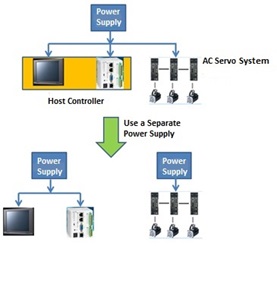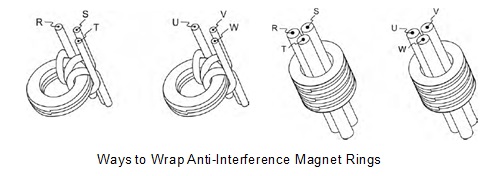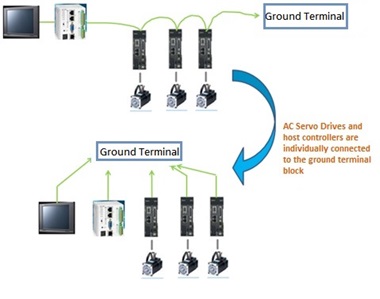How do I eliminate Electromagnetic Interference (EMI) in AC servo system?
When an AC servo system is switched to Servo On, it generates high or low frequency noise during operation and can interfere with peripheral equipment (e.g. host controllers) via conduction or radiation, which often results in communication errors or abnormal operations. The following methods are can resolve this issue:
1. Separate Power of Servo System and Host Controller
Since EMI generated by the servo system usually influences host controllers such as programmable logic controllers (PLC) and human machine interfaces (HMI) through the power circuit, it is recommended to separate power of AC servo system and the host controllers to reduce the EMI effect

2. Cable Shielding to Minimize Electromagnetic Interference
Users can select metal braided shield twisted-pair cable as the material for communication wiring to reduce EMI noise on host controllers via radiation or conduction.
3. Wrap Anti-Interference Magnet Ring on AC Servo Drive Power Connector Terminals RST and UVW
When AC servo system is switched to Servo On, EMI interference such as common high frequency signals appear. The use of anti-interference magnet rings effectively reduces high frequency signal interference on power cords, signal cables and connectors, so that normal signals can be transmitted.

4. Devices are Properly Connected to Ground Terminal
Operating devices (e.g. AC servo drives) often experience electric leakage which interfere with peripheral equipment via metal objects such as wires and screws. The best way to avoid this problem is to use one ground cable for each AC servo drives and host controllers for connecting to the ground terminal -. The reason is if AC servo drives and host controllers are connected by a single ground cable to the ground terminal, the electric leakage will immediately affect other peripheral equipment via the wire and create a larger interference; secondly, the area of the last contact on the ground wire is too small to effectively prevent electric leakage from interfering with the devices.
